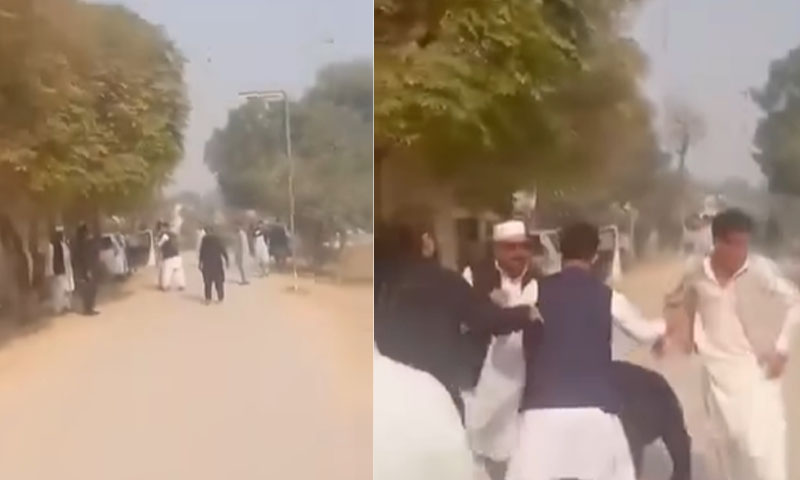- Web Desk
- Yesterday
Humour lost in irony: misinformation swirls amid India-Pakistan conflict
-

- Web Desk
- May 09, 2025

A surge of misleading content is sweeping through social media in both India and Pakistan, with doctored visuals, misattributed videos, and fake advisories fuelling confusion amid rising military tensions. Despite the looming threat of a full-blown conflict between two nuclear-armed neighbours, the flow of misinformation shows no sign of slowing.
While a massive share of the misinformation originates from Indian mainstream and social media, Pakistan is not entirely immune to these misinformation and disinformation campaigns either.
For instance, yesterday, there were reports of some emergency “sirens” being heard around the federal capital Islamabad. Deputy Commissioner had to issue a statement refuting these claims, and urging people not to pay heed to such misleading attempts and trusting only the official resources.
A few individuals are spreading panic in Islamabad by sounding false sirens، public is advised to avoid rumors. In case of an emergency, district administration will issue a verified announcement on social and electronic media، Plz Don't rely on unverified information 1/2
— DC Islamabad (@dcislamabad) May 8, 2025
Even so, the doctored media – photos, videos, recordings etc. – are primarily being engineered and pushed into the mainstream media from India’s side. Before looking into, and debunking, some of the most widely shared media pieces, let’s quickly look at the causes behind this sudden but intense surge in fake news.
PAHALGAM ATTACK AND MILITARY POSTURING
On April 22, 2025, an attack on civilians in the Pahalgam area of the Indian Illegally Occupied Jammu and Kashmir (IIOJ&K) claimed the lives of 26 people. Since then India has not only blamed Pakistan for the attack, without presenting any proof to the international audiences, but has also suspended the Indus Water Treaty, and been conducting missile and drone strikes in Pakistan.
Since the first Indian missile strikes on Pakistan on 7 May, a massive barrage of fake news, incorrectly attributed statements and doctored photos and videos have been making their way to the TV screens and social media platforms. Fact-checkers, journalists, and digital investigators have been working continuously to debunk these viral posts misrepresenting past or unrelated events as current developments. The situation has been exacerbated by the lack of timely, clear communication from official sources.
OFFICIAL STATEMENT AND COUNTER STATEMENT
The only proper official statement to have come out of India, came from their Defense Ministry, alleging that Pakistan has attacked 15 of their military targets. The official counter-point to this was presented by Pakistan’s foreign minister and Military Spokesperson. Apart from these, despite the rhetoric being shared by the political leadership of both countries, there is not much to have from the governmental sources in India. Likewise, from Pakistan, only the events of retaliation are being officially accounted for by the Inter Services Public Relations (ISPR).
FAKE NEWS, FAKE NEWS EVERYWHERE
One of the most widely circulated videos claimed to show Indian airstrikes on Bahawalpur. Several Indian news channels aired the clip, but fact-checkers from Alt News traced the footage back to an Israeli airstrike on Gaza from October 2023. BBC Verify later confirmed the same origin, debunking its connection to the ongoing conflict.
Prominent social media accounts and journalists in both countries further amplified the misleading footage, lending it an air of authenticity and fuelling anxiety among viewers.
Another misleading video, allegedly showing drone strikes in Pakistan, was in fact from the Texas wildfires, while AI-generated visuals and simulations from unrelated conflicts in Ukraine and Gaza have been repeatedly passed off as real-time coverage of the South Asian crisis.
On the Pakistani side, some viral claims suggested attacks on Indian military infrastructure, including a supposed airstrike on Srinagar’s airbase and the destruction of a brigade HQ. Videos used to back these claims were also found to be unrelated to the current events, with some analysts digital forensic experts, labeling it to have been from a past incident from within Pakistan, The Independent reported.
In one especially egregious example, a video game sequence from Battlefield 3 was falsely presented as footage of Pakistani jets striking Indian territory.
With no official footage released and minimal verified information from either government, false reports have continued to fill the vacuum. Conflicting accounts persist about the fate of Indian aircraft, including a French-made Rafale jet. While India denies any aircraft losses, The Independent confirmed the presence of debris at a crash site, and French intelligence reportedly told CNN that a Rafale had indeed been lost.
Meanwhile, Prime Minister Shehbaz Sharif said in a speech to Parliament that Pakistan has shot down at least five aircraft of India, and ould have downed twice as many, were it not for what he described as “extreme restraint.”
HUMOUR LOST IN IRONY
One off-shoot of this misinformation comes from the tendency of netizens to resort to humour, even in situations as grave as an armed conflict. Some Pakistanis shared images of actors dressed in military attire from different movies and TV shows, both Indian and Pakistani, labelling them as the “casualties” of war. Some went further, mocking the fake news frenzy of Indian media, and made up imaginary places such as a sea port in Thar desert of Pakistan, or an airport in a relatively small city of Sheikhupura. While instantly clear to the Pakistani audiences, jokes like these have also found their way to Indian social media as ‘acceptance by Pakistanis’ of the Indian attacks.
Finally, on the morning of May 9, Indians woke up after a night of excessive propaganda by the Indian news channels, claiming to have downed F-16 jets of Pakistan and having arrested the PM and the Army Chief. Instead they were greeted by the photos of Pakistanis enjoying their breakfasts and playing tennis, with PM Shehbaz issuing a congratulatory message on X, to the global Christian community on the selection of a new Pope.




